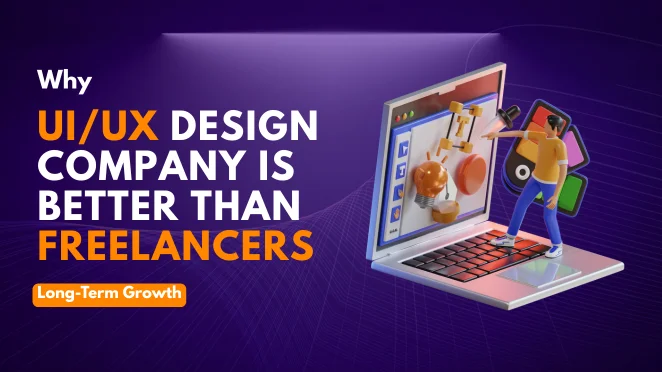
How to Select the Best AI Voice API in 2025
Nova Hawthrone
November 26, 2025

When you're building a product—especially a digital one—design is not just a surface-level choice. It's a strategic tool that influences how your users interact, engage, and remain loyal to your product. That’s why the decision between hiring a freelance UI/UX designer and partnering with a UI UX design company is a critical one, especially if you’re aiming for long-term growth.
While freelancers may seem like an attractive option in the short term—especially from a cost perspective—the long game demands more. More consistency, more capacity, more depth of expertise, and more accountability.
Here’s a comprehensive look at why a UI/UX design company is better than freelancers for sustainable, scalable growth.
A freelancer might be great at one or two things—say, wireframing and visual design—but a UI/UX design company brings in a complete team of specialists: UX researchers, product strategists, interaction designers, UI designers, motion experts, accessibility consultants, and often even developers.
This layered expertise ensures that:
In contrast, even the best freelancers often work solo, resulting in limited perspectives and skill sets.
Designing a product isn't a one-time gig. It’s a continuous loop of research, prototyping, feedback, iterations, and rollouts. A UI/UX company has the team structure and resource depth to scale with your needs.
Whether you’re:
A design company can scale resources—add more hands or brains to the problem—without compromising quality or speed. With freelancers, you’re often stuck in a bottleneck, or worse, forced to onboard someone new each time, risking inconsistency.
A good UI/UX agency doesn’t just dive into Figma. They bring in established methodologies and processes:
Freelancers might follow some of these, but companies institutionalize them—making your product’s evolution repeatable, predictable, and efficient.
This structured process leads to better outcomes. You get systems, not just screens.
Let’s be honest—freelancers may ghost. Or they might go on an extended vacation. Or take on too many projects. Or burn out.
Design companies, on the other hand, have project managers, account heads, SLAs, and internal checks to ensure delivery and continuity. There are contracts, escalation paths, and committed timelines in place.
This layer of accountability becomes crucial when your product is customer-facing, time-sensitive, or investor-backed.
A good UI/UX design company isn’t just a service provider—they act like a strategic partner. They understand your business goals, your user behavior, and your industry dynamics, and help you align design with growth metrics.
This often means:
You get strategic alignment, not just pixel perfection.
Your designers will need to work with developers, product owners, marketing teams, and QA engineers. UI/UX companies are used to this environment. Their processes are aligned with agile workflows, sprint planning, handoffs, and developer-ready files.
Freelancers, even when talented, may lack the experience or bandwidth to work in such structured, multi-stakeholder environments.
If you want to grow fast and stay consistent, you’ll need a design system—a centralized, reusable library of components, patterns, and guidelines.
Agencies are often adept at building and maintaining these systems, ensuring:
Freelancers may not have the time or resources to build a scalable system.
UI/UX companies usually invest in:
This ensures your design decisions are evidence-based, not opinion-based. While freelancers may conduct interviews or usability tests, companies bring rigor, documentation, and synthesis that feed long-term strategy.
Unlike freelancers who may be juggling multiple clients, agencies can integrate with your internal team, attend meetings, collaborate on Slack, and adapt to your communication style.
This fosters shared understanding, enhances feedback loops, and cultivates long-term rapport—which is invaluable when you’re iterating quickly and frequently.
They often contribute beyond UX/UI—offering brand identity, motion design, content strategy, and even growth consulting.
When you’re in it for the long haul, these holistic services ensure your product design isn’t just usable—but memorable, strategic, and cohesive.